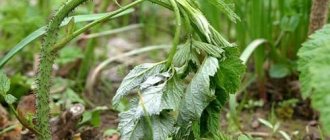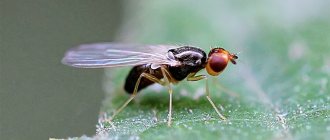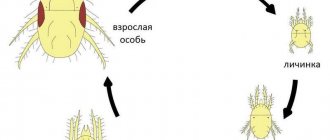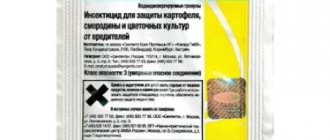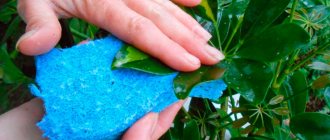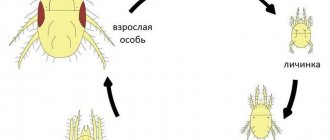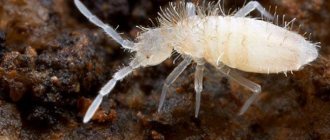Spider mites on indoor plants are a dangerous parasite; how to deal with them should be decided immediately, otherwise your favorite flowers will soon die. Against these small arthropods, slightly different methods of warfare are required than when infesting plantings with other types of insects.
Spider mites on indoor plants
Microscopic parasites are voracious organisms that affect over two hundred species of cultivated plants. The fight against spider mites on indoor plants is a constant problem for the gardener. The favorite delicacies of these creatures are citrus fruits, palm trees, ficuses, dracaena, balsam with fuchsia. The arachnid pest itself is extremely difficult to discern without instruments; adult specimens reach less than 1 mm in size.
Common types of spider mites:
- Common - omnivorous individuals of pale green or greenish-brown color, up to 0.6 mm in size, with darkish markings on the sides of their bodies.
- Atlantic - most often found on cucumbers.
- Red - heat-loving creatures, in the northern regions they hide in indoor areas.
- Turkestan - males are green, wintering females are reddish in color, loves melons, beans and cotton.
- Cyclamen - in addition to foliage, it damages tubers; when widespread, the plant becomes covered with a layer of dust.
- False is the smallest species; it forms a web at the final stage.
What do spider mites look like on indoor plants?
The damage caused by the microscopic organism is so obvious that it immediately forces the grower to look for a way to deal with the voracious alien. Although it is visually difficult to see spider mites on indoor plants, signs of their presence on the foliage are noticeable almost immediately:
- In places where leaf plates are bitten, white dots are visible on the underside at first, and darken over time.
- Affected foliage, deprived of quality nutrition, withers, curls and dies.
- Mass reproduction of the tick is accompanied in an advanced stage by the formation of a pale cobweb.
- If spider mites have spread in large numbers on indoor plants and the owner has not decided in time how to fight the parasite, then soon the depleted plants die.
Where do spider mites on houseplants come from?
Small arthropods have learned to hibernate, settling under plant debris, so most species of the parasite are found everywhere in the external environment. Once in rooms with a temperature of 25ºC-30ºC, the creatures reproduce all year round. A comfortable humidity level for an arachnid pest is 35% -55%. If spider mites have settled on indoor plants, decide how to deal with them immediately; the females of this parasite give birth to up to twenty generations.
Considering the reasons for the appearance of spider mites on indoor plants, scientists determined that all types of pests in enclosed spaces spread more strongly at low humidity. The exception is the false spider mite, but you have to fight this species less often. It is difficult to completely exclude pests from entering an apartment. There are many different ways for ticks to enter your home:
- with soil during transplantation;
- clinging to a garden tool;
- on clothes;
- with four-legged pets;
- with dirty shoes.
Folk remedies for spider mites
When starting to study recipes on how to fight against spider mites on indoor plants, it is better not to use dubious and toxic products. To begin with, you can carry out a simple washing of the foliage and surrounding area with soap solutions. Be sure to treat the stands, window sill, ceramic saucers, and pot. A strong solution with laundry soap or dishwashing liquid will completely destroy the arthropod enemy on the washed surface.
Spider mites on indoor plants - ammonia
Medical 10% ammonia is a common remedy for various garden evil spirits. The popular ammonia helps against spider mites if you prepare it in the correct dosage, protecting the body with a simple cotton-gauze bandage for safety. Effective concentration – 1 tbsp. spoon/bucket of water. It is necessary to go through all the leaves when spraying with ammonia on both sides of the plates. With this mite treatment, we feed the crops with nitrogen, combining the destruction of parasites with useful fertilizing.
Garlic for spider mites - indoor plants
For a long time, gardeners have tried to fight annoying insects with garlic preparations, because this plant is always at hand and treatment is cheaper for the owner than buying an expensive, but not always effective acaricide. Even a schoolchild can prepare such a drug, because it is not toxic, and the process of mixing homemade ingredients is extremely simple.
We use garlic against spider mites:
Interesting on the topic:
How to use food waste on the site
Jan 22, 2022
10 mistakes you make when mulching
Jan 22, 2022
- You will need up to 170 g of cloves.
- Use a garlic press or rolling pin to chop the purified material.
- Pour the pulp with a liter of boiling water.
- Infusion time under the lid is 5 days.
- The saturated solution takes on a dark color.
- Pour the infused product into a spray bottle, diluting the liquid 1:1.
Onions for spider mites on indoor plants
Almost the cheapest recipe that helps fight the microscopic parasite is generally made from waste. Onion infusion against spider mites can be infused on dry peels prepared in advance, storing the required amount in the attic or pantry. We prepare the product, following strictly the points of the old instructions:
- you need up to 100 g of husk;
- To fill this ingredient, 5 liters of water are required;
- infusion time – 5 days;
- strain;
- We fight spider mites.
Insecticide composition
In the last century, every Soviet person knew that dichlorvos is a universal, quick-acting aerosol with a convenient sprayer that can destroy cockroaches in the most inaccessible places, as well as mosquitoes and flies. A distinctive feature of this product was a terrible suffocating smell that lingered in the air for a long time after the room had been treated.
Today, scientists have invented a new drug, but the name has remained the same. The production of an insecticide called “Dichlorvos” is carried out by various companies, each of which wants to highlight its product. This is how “Dichlorvos NEO”, “Varan”, “Raid”, “Triple Impact” appeared. All these products are excellent for killing bed bugs, cockroaches, and flies.
Instead of demethyl-dichlorovinyl phosphate, used in the old drug as the main active component, in the new generation insecticide, permethrin and cypermethrin have a poisonous effect. In addition, the product contains aliphatic carbohydrates, ethyl alcohol, dimethyl sulfoxides, piperonyl butoxides.
The aerosol has the scent of lilac, rose or lavender, which makes cleaning the room not only useful, but also a pleasant experience.
Preparations for spider mites on indoor plants
Ancient folk recipes in advanced cases do not always expel the pest from green foliage. Out of a desire to save your favorite crop, you have to look for a factory-made remedy against spider mites on indoor plants, created on the basis of a powerful acaricide. In the summer, caring flower growers can take flowerpots outside for treatment, using protective solutions of various types, but in winter it is better to choose non-toxic preparations for control. We will especially highlight insectoacaricides of biological origin, the safest for use in the home.
Chemical acaricides:
- Omite;
- Oberon;
- Floromite;
- Apollo;
- Aktellik;
- Envidor;
- Fufanon;
- Dursban.
Biological insectoacaricides:
- Kleschevitis;
- Agravertine;
- Aktofit;
- Fitoverm.
Actara against spider mites on indoor plants
Inexperienced gardeners try to fight tiny parasites in the same ways as in the war with the Colorado potato beetle, aphids and other nasty insects. Many people wonder why the powerful Aktara against spider mites is not always effective. You won’t notice any arthropod pests on the packaging of this pesticide, and rightfully so. Although the drug is potent, it is an insecticide and is not designed to kill this class of creatures. If you want to purchase the most universal product, then replace it with an insectoacaricide.
Fitoverm against spider mites on indoor plants
Enteric-contact Fitoverm against spider mites works effectively and is more attractive to the owner of indoor plants than the toxic chemistry of the old generation. The faint odor from the biological product disappears after 3-4 hours, without causing persistent discomfort. The factory instructions advise to fight ticks using a dosage of 2 ml / 1 l. Experienced gardeners admit that the pest quickly gets used to Fitoverm and often has to be increased to 10 ml/1 l, alternating the product with other acaricides during the season.
Features of Fitoverm:
- The action is contact-intestinal.
- Efficiency under ideal conditions is 96% -100%.
- Safe and decomposes quickly.
- The effect on indoor plants is noticeable after 6 hours.
- The protection period is up to 20 days.
- The effectiveness of Fitoverm increases at high temperatures; in a cold room the biological product works worse.
Dichlorvos for spider mites on indoor plants
In a hopeless situation, flower growers decide to fight even with non-standard means. Some housewives are experimenting using Dichlorvos against spider mites. To avoid poisoning the entire room, you should cover the plant with a cardboard cone or bag, then inject a poisonous aerosol through the hole. If contact with the pesticide lasts more than 5 minutes, the chance of killing the tiny parasites is higher. For a good effect, in addition to the foliage, carefully spray the soil, pots, and surrounding surfaces.
Precautions when using dichlorvos
Precautionary measures imply the absence of children and pets in the treated area.
The components included in dichlorvos are quite toxic and can harm the health of people and pets. Recent developments have led to safer formulas used to create the product. The most modern insecticides include pyrethroids, which are mildly toxic to humans. However, when using dichlorvos, you should adhere to the following rules:
- Before disinsection of a room, it is necessary to remove people and animals from it, and remove indoor plants;
- spraying of the drug is carried out only in a respirator and protective rubber gloves;
- if poison gets on the skin, it should be washed off immediately with running water;
- if toxic liquid gets into your eyes, they should be rinsed generously under running clean water;
- if there is a severe allergic reaction to the drug, nausea or vomiting, you should immediately consult a doctor;
- It is strictly forbidden to spray insecticide near an open fire;
- dichlorvos is stored away from heating devices and in places inaccessible to children.
It is strictly prohibited to treat an apartment or house in the presence of children and pets!
Prevention of spider mites on indoor plants
If there are spider mites on indoor plants, how to fight the microscopic infection so that it no longer appears on ornamental plantings? It is easier to eliminate dangerous arthropod enemies from cultivated plantings by creating an environment in the house that is uncomfortable for pests. When taking preventive measures on time, be careful. For example, when spraying thoroughly, we do not allow moisture to stagnate in the grooves of the leaves, otherwise it is easy to provoke the development of infection.
Prevention of spider mites on indoor flowers:
- We reduce air dryness artificially by periodically spraying the foliage.
- Periodically wash the green parts of the decorative crop with soap and water.
- When planning a transplant, we roast the soil in ovens or spray the substrate with appropriate pesticides.
- We disinfect pots, moss, and pebbles with sand.
- When purchasing new flowerpots, it is better to first send them to quarantine in a separate room and treat them with acaricides.
- Periodic inspection of flowers helps to find mites at an early stage, which allows you to fight them in more gentle ways.

